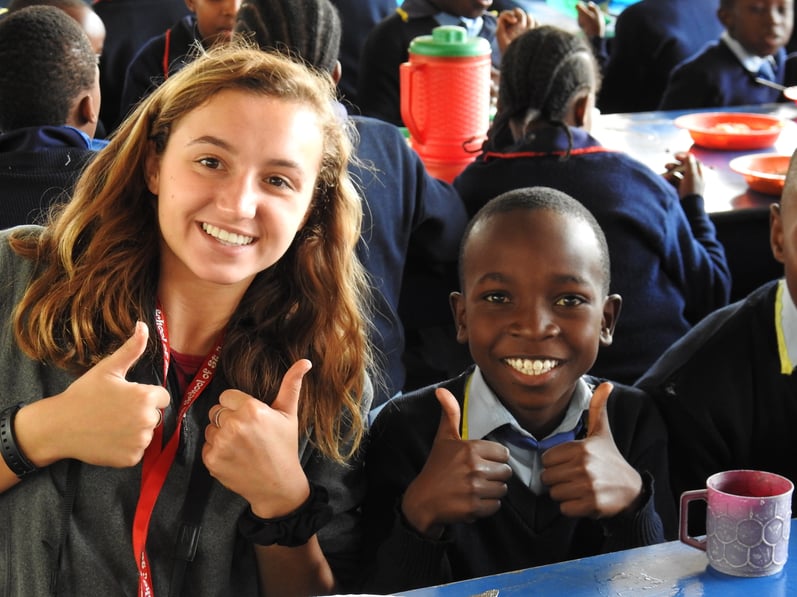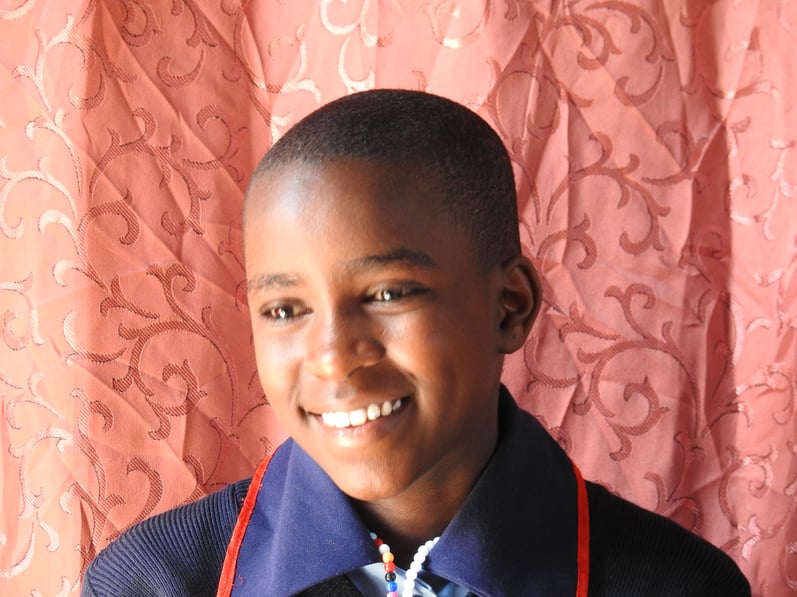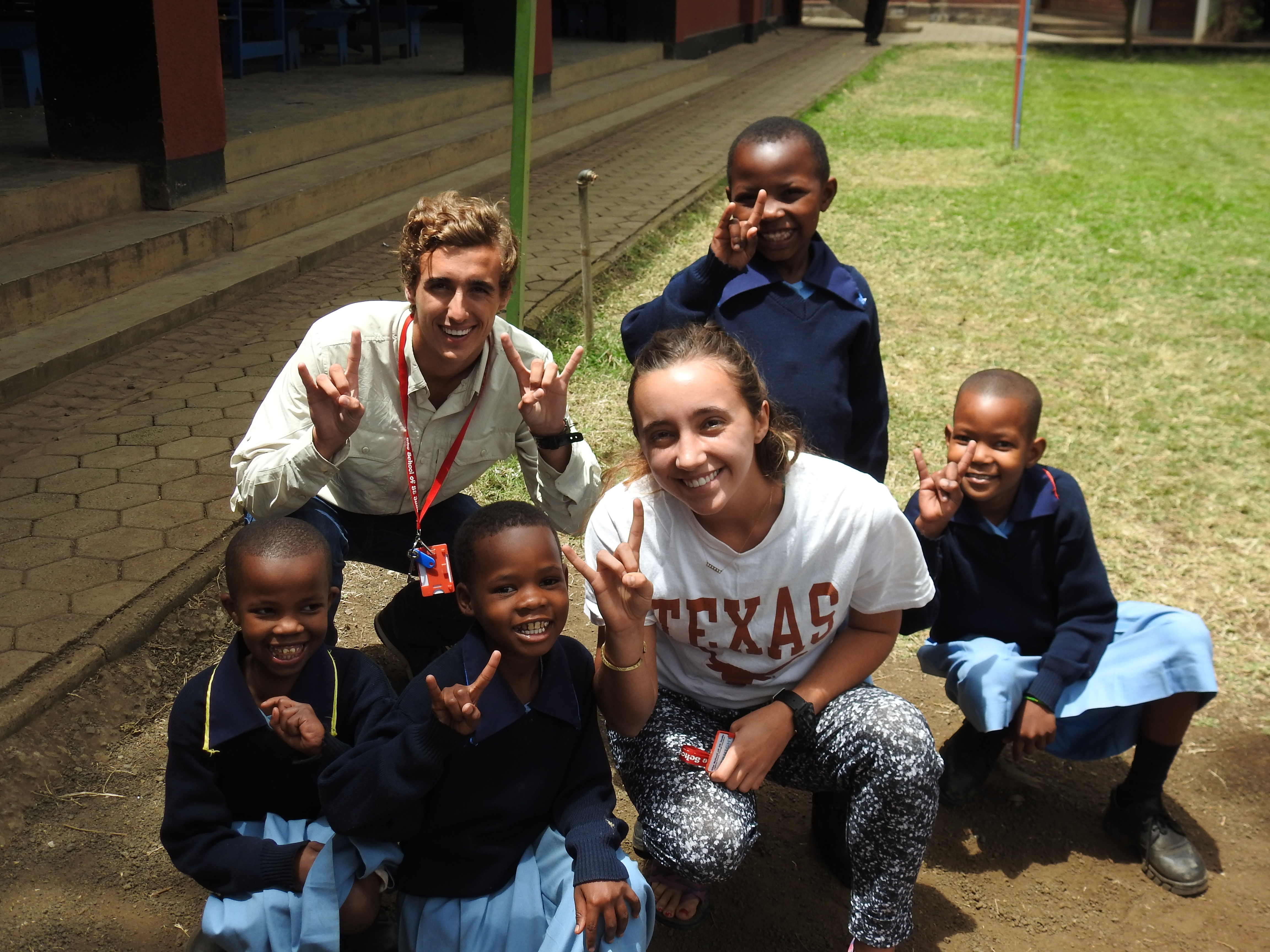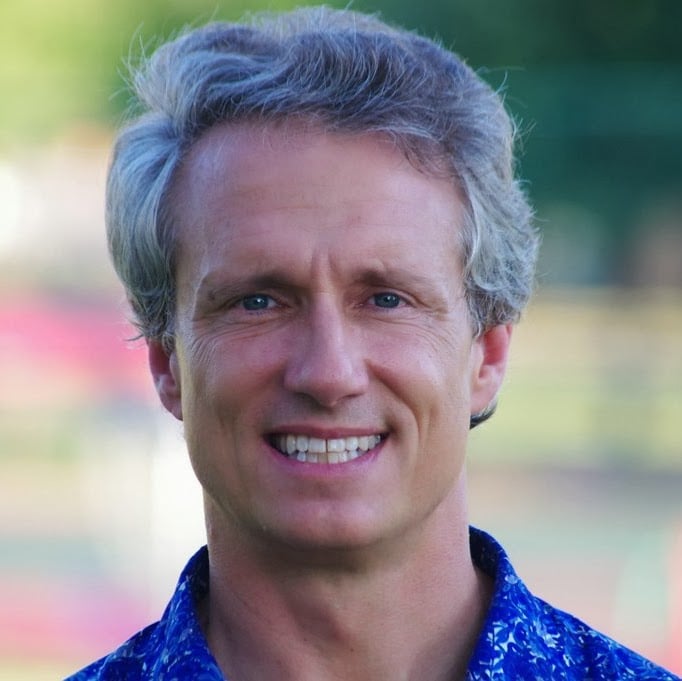 A few days ago, I wrote about Mandy Stein and the orphanage/academy that she has created.
A few days ago, I wrote about Mandy Stein and the orphanage/academy that she has created.
Today, I would like to talk about another organization that is doing positive things in northern Tanzania: the School of St Jude’s.
Before I go farther, I would like to share a conversation that Susie and I had before we came to Africa. Having three children graduate high school has made us ponder our lives, their direction and the milestones our family life has reached.
We’ve stared to talk about “big picture” items that are important, but rarely urgent. These include charitable giving, estate planning, retirement savings, living wills, and the like. They are often ponderous and not much fun (OK, charitable giving can be, but you follow me). My point is that we can go from day to day and not think about these things.
With the prospect of a 75% empty nest, we found ourselves thinking about the items on this lest. We are looking at our wills again. And we have started to be more systematic about our charitable giving. This topic (charitable giving) has taken on special importance for us as we have decided to create a non-profit (the Champions Education Foundation, CEA) so that we can help campers attend camp (ours and others), fund research into the outcomes of camp, and sponsor groups to do outdoor education. We hope to sponsor Mandy’s orphans out of CEA.
Anyway, we have been asking ourselves “what are our charitable priorities?”
Long drives in Africa led to long conversations. We talked about the problem of large charities (overhead, questionable accountability) versus their advantages (experience, ability to respond to emergencies, economies of scale). For example, the Red Cross has a fair amount of overhead, but you cannot beat it for responding to a tsunami.
Sometimes excellent charities can fall victim to manipulative workers, as seems to be the case with World Vision where a person (or group of people) were redirecting funds meant for children to Hamas. This incident reflects a problem with size and accountability across multiple continents.
What we decided we would love to see is someone that could help us assess what would have the most impact per dollar – as a charitable investment with the greatest return. The specific example I gave was water wells vs. mosquito nets. Both of these items are critical in Africa, but which one helps more people per dollar donated? We don’t know, but we longed for someone whose judgment we trust who is on the ground and able to assess how best to impact a community.
At a fundamental level, Susie and I are educators. We see camp as critical education. During the non-summer months, we run an experiential learning program called The Outdoor School. We have emphasized education in our lives and that of our children.
For these reasons, Mandy and Gemma (described below) fit the bill for our charitable giving.
Both women run incredibly lean operations that focus on education. Both women also understand that the poverty cycle is not just about increased education. It is about improved nutrition, access to health services, reduced teen pregnancy and the education of parents as well as children.
I described how Mandy feeds, clothes, houses and educates her children. She also has ridged rules about avoiding pregnancy, even encouraging surgical procedures for women that have too many children. She also strives to improve education in the other schools of her village. With her solar-powered computer lab, she can teach tech skills not readily available anyway else. She is increasing local employment meaningfully.
As far as Susie and I are concerned, this is the total package. We can see the children and the community that is being impacted. We see how every dollar helps the children, their families and their community.
Like Mandy, Gemma and St Jude’s feel like an ideal charity to us.
Like Mandy, it has minimal overhead. It also helps with nutrition, health and family education (for example, they will only take one student per family with the expectation that their students will help educate their siblings). St Jude’s even addresses a problem I would not have anticipated - being an albino. Many superstitious people believe that albinos are lucky or possess magic. As a result, having a body part of an albino can bring great luck. During a recent, highly-contested election, St Jude kept its two albino students on campus (even though school was out-of-session), fearing that they might be kidnapped to extract body parts for good luck.
Here Liam is eating ugali with one of the two albino students.

Like Mandy, Gemma is a person of passion and vision.
They both have accomplished more than any reasonable person would have anticipated. beginning their work in their early 20’s with help from their communities, Mandy from her Texas connections (including many Camp Champions families) and Gemma from Australian Rotarians.
As you can see, they have a great deal in common.
St Jude’s differs from Mandy’s academy in its focus. Mandy is committed to helping the most vunerable in her community, particularly the children who have no parents or parents incapable of helping their children (e.g., one of the cutest guys we met had two living parents, but was found undernourished in a trash heap left to die).
Gemma takes a different approach. Her school only takes students in the top 1% and attempts to educate them at the highest level possible. To gain entry into St Jude’s, a student must meet two criteria:
- Poverty – they have developed a needs assessment system to measure who is truly impoverished.
- Academic potential – they enroll students into the 1st grade, 4th grade, 7th grade and 10th grade based on performance on tests. While I am not the biggest fan of standardized tests, these tests are perhaps the best means to determine who the high performers are. I have suggested that they add Angela Duckworth’s “grit assessment” to their process. Originally, Gemma brought in all the students after 1st grade (and then had them repeat 1st grade), but she has since realized that this it too early to determine academic potential. In recent years, they decided to bring in children who have started to shine later in life. They initially wondered if public school children could compete with students educated at their academy (which performs in the top 10 of the country). What they found is that the gifted students in the public schools have focus and tenacity that (combined with intelligence) enables them to not only catch up, but often outperform the existing students.

St Jude’s serves 1900 children. Gemma does not know all of them. In fact, she probably only knows a small minority. Her focus is to train the students with the highest potential (as best as she can measure it) so that they will become the change agents in their communities and their country in the future. It is a less personal mission than Mandy’s, but it is also appealing. We will contribute to it as well.

We simply love the commitment of these passionate women. Both essentially live at their schools. Mandy’s apartment is next to the original orphanage and she has a room at the new one. Gemma lives within 200 meters of her original campus. Susie and I really identify with this part of their lives as we have happily lived at camp for over 20 years.
In summary, Susie and I will continue to support some of the major charities, but I am excited to find people like Mandy and Gemma who will personally make sure that our contributions make an impact.
But until Gemma makes St Jude’s a little more like summer camp, Mandy’s will be our favorite.
Steve Sir
PS We took a home visit to meet the family of a student (Terresia is pictured above). The visit was fascinating, but the item I want to share with you was the vehicle that we took there. In the US, the van we took would seat maybe 8 people. Here is the bus schedule. As you will see, it has 28 names on it.

Here is the "bus" that would carry 28 (the driver makes 29).

Welcome to the comfort of Tanzania’s transportation!


